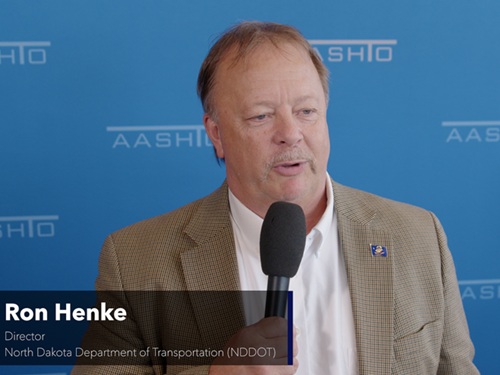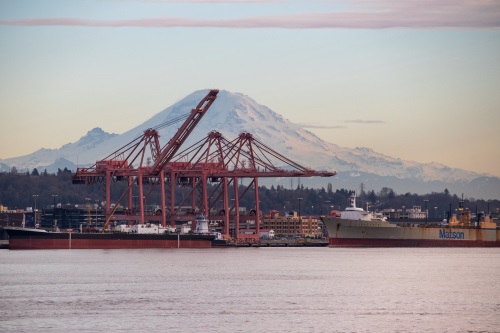The Northwest ports of Seattle, Tacoma, and Vancouver, British Columbia plus the combined container operations of the Northwest Seaport Alliance are jointly committing to a new vision to phase out emissions from seaport-related activities by 2050.
[Above photo by the Port of Seattle.]
In a collaboration among the four ports, the Northwest Ports Clean Air Strategy seeks to meet this target through changes in equipment, fuels, and infrastructure, supporting cleaner air for local communities.

“In order for us to meet these ambitious long-term targets, it’s essential that the state and federal government partner with the Ports to provide progressive policies and financial assistance that create incentives for their adoption prior to regulatory obligations,” said Fred Felleman, the Port of Seattle commission president and co-chair of The Northwest Seaport Alliance, in a statement.
“Even though maritime transport is an efficient means to move goods and people, the industry still relies on fossil fuels, and global growth in activity means that emissions overall are still on the rise,” added Dick Marzano, the Port of Tacoma’s commission president and co-chair of The Northwest Seaport Alliance. “Through the Northwest Ports Clean Air Strategy, ports have a blueprint to do their part by helping to protect air quality and responding to the international call to take action on climate change.”

That strategy, established in 2013, covers six sectors of port activity – oceangoing vessels; cargo-handling equipment; trucks; harbor vessels; rail; plus port administration and tenant facilities.
It also seeks to “transition” port and shipping activities toward a variety of low- and zero-emissions options, such as by phasing-out older, high-emitting diesel-powered equipment.
Via this new commitment, the Northwest Ports will each release port-specific plans to implement the 2020 Strategy across their unique operations and businesses while continuing to report on yearly progress towards achieving those emission goals. Port-specific implementation plans enable ports to identify, prioritize, and focus resources on actions in a way that is strategic and relevant to their business and policy contexts, and the regions where they operate while still maintaining the long-standing collaborative effort.
Those emission-reduction plans dovetail with similar efforts by the Washington State Department of Transportation to reduce maritime emissions from its ferry system.

The agency noted in its 2019-2021 Sustainability Action Plan that an emphasis on sustainable transportation “has increased in recent years” and that its Washington State Ferries or WSF division is currently in the midst of a transition to a zero carbon-emission ferry fleet.
In 2019, Washington state legislators approved a two-year state operating, capital, and transportation budgets on April 30; budgets that include funds for a new WSF hybrid-electric ferry as well as monies to convert two existing WSF vessels to hybrid-electric propulsion.
Washington state legislators also approved a clean transportation bill two years ago that will “aggressively incentivize” the deployment of more all-electric and zero-emission vehicles.
“The legislature also finds that an increased reliance on greener transit options will help to further reduce harmful air pollution from exhaust emissions,” it said. “The legislature further finds that support for clean alternative fuel infrastructure can help to increase adoption of green transportation in the state.”
 Nation
Nation
North Dakota DOT Profiled in State DOT Update
July 3, 2025 Nation
Nation

